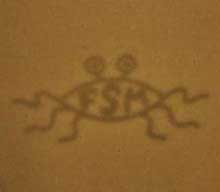Chris Voigt’s team at the University of California have turned a bed of light-sensitive bacteria into a photographic film. Although the system takes 4 hours to take a picture, it delivers extremely high resolution.

The “living camera” uses light to switch on genes in a genetically modified bacterium that then cause an image-recording chemical to darken. The bacteria are tiny, allowing the sensor to deliver a resolution of 100 megapixels per square inch.
To make their novel biosensor, scientists chose E. Coli, the food-poisoning gut bacterium. They shuttled genes from photosynthesising blue-green algae into the cell membrane of the E. coli. One gene codes for a protein that reacts to red light. Once activated, that protein acts to shut down the action of a second gene. This switch-off turns an added indicator solution black. A monochrome image was thus “printed” on a bed of the modified E. Coli.
The experiment could lead to the development of “nano-factories” in which minuscule amounts of substances are produced at locations defined by light beams.
For instance, a different introduced gene could produce polymer-like proteins, or even precipitate a metal. “This way, the bacteria could weave a complex material,” says Voigt.
Via New Scientist.
